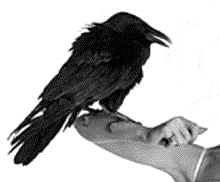Max Planck Research Network Wandering Seminar:
History of Scientific Objects
Medical Museion, Copenhagen,
Monday 8 - Friday 12 May, 2006.
Der er enkelte pladser tilbage på Københavns-delen af Max Planck Research Network's europæiske vandringsseminar "History of Scientific Objects", 8. - 12. maj. Pladserne vil tildeles dem, der først melder sig. PhD-studerende har fortrinsret. Prisen for deltagelse er 300,-/dag (undtagen mandag), og inkluderer kaffepauser og frokost. Evt. middagsdeltagelse betales derudover.
Tilmelding til Thomas Söderqvist, Medicinsk Museion, ths@mm.ku.dk, senest fredag den 5. maj kl. 12.
|
Monday 8 May
15.00 - 16.00 Wellcome! Appetizer overview of Medical Museion's exhibitions and collections.
16.00 - 18.00 Round-table presentation of wanderers and the week's local staff. Debriefing of wanderers' experience in Munich
Tuesday 9 May
9.30 - 10.30 "The Medical Museion concept" (Thomas Söderqvist)
11.00 -12.30 Round-trip in the collections of Medical Museion (Ion Meyer, Anders Olsen, Camilla Mordhorst, Thomas Söderqvist)
13.30 -14.30 "Collecting biomedicine of the 21st century" (Thomas Söderqvist)
15.00 -16.45 Project presentations - I:
"Human boundary objects" (Klaus Høyer) and "The multiple foetus: practicing foetuses in medicine, history and museums (Sniff Nexø)
Wednesday 10 May
9.30 - 11.30 Project presentations - II:
"Researching, collecting and interviewing for a history of kidney transplantation (Søren Bak-Jensen) and "Researching and collecting virtual surgery" (Jan Eric Olsén)
11.45 - 12.45 Round-trip in the present exhibitions of Medical Museion (NN)
14.00 - 15.00 "A new medical history museum exhibition concept" (Camilla Mordhorst)
Thursday 11 May
9.30 - 11.30 Project presentations - III:
"Following the minipig" (Hanne Jessen) and "Visualizing epidemiology" (Susanne Bauer)
11.45 - 12.45 Preserving recent biomedical objects - demonstration of the conservator's laboratory work (Ion Meyer)
14.00 - 15.30 Visit to The Danish Museum of Art and Design, Bredgade 68, Copenhagen (NN)
Friday 12 May
9.30 - 10.30 "Carnevalesque medicine: Representing and displaying curious, anecdotal, unique, peculiar and monstrous biomedical objects" (Camilla Mordhorst, Thomas Söderqvist)
11.00 - 12.00 Concluding discussion about medical, scientific, museological and art objects
14.00 - 17.00 Technological objects:
Visit to the History of Technology Division, Technical University of Denmark, Anker Engelundsvej 1 (Building 101A), Lyngby (Jan Tapdrup, Chris Chilvers)
|
